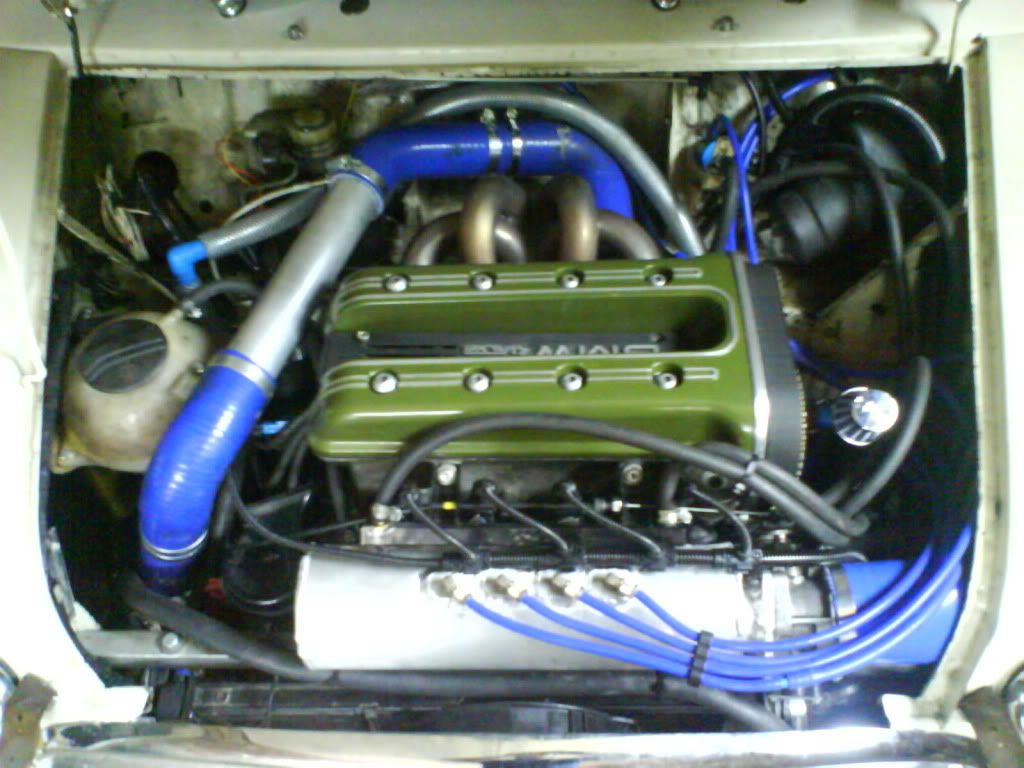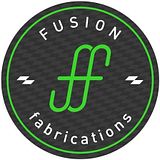| Page: |
| Home > General Chat > So exactly WHICH clutch plates are 190mm dia? | |||||||
 3329 Posts Member #: 184 Senior Member Melton Mowbray, Pie Country |
9th Feb, 2009 at 09:14:45pm
I guess the other consideration is that less area will heat up quicker. So on a track you may overheat the plate if it doesn't have enough area.
http://www.twin-turbo.co.uk
|
||||||
|
8604 Posts Member #: 573 Formerly Axel Podland |
9th Feb, 2009 at 09:59:08pm
Right here goes.
Saul Bellow - "A great deal of intelligence can be invested in ignorance when the need for illusion is deep."
|
||||||
|
857 Posts Member #: 1778 Post Whore Northants |
9th Feb, 2009 at 10:02:48pm
i think i should have paid more attention in maths... |
||||||
|
8604 Posts Member #: 573 Formerly Axel Podland |
9th Feb, 2009 at 10:04:03pm
On 9th Feb, 2009 sturgeo said:
i think i should have paid more attention in maths... Obviously, seeing as this is physics. Bloody good job I didn't pay for your education. Saul Bellow - "A great deal of intelligence can be invested in ignorance when the need for illusion is deep."
|
||||||
 12307 Posts Member #: 565 Carlos Fandango Burnham-on-Crouch, Essex |
9th Feb, 2009 at 10:04:16pm
I feel an excel session coming on at work tomorow.... lol
Edited by Joe C on 9th Feb, 2009. On 28th Aug, 2011 Kean said:
At the risk of being sigged... Joe, do you have a photo of your tool? http://www.turbominis.co.uk/forums/index.p...9064&lastpost=1 https://joe1977.imgbb.com/ |
||||||
 3692 Posts Member #: 1833 Formally mini_majic Auckland, New Zealand |
9th Feb, 2009 at 10:53:24pm
On 9th Feb, 2009 Paul S said:
On 9th Feb, 2009 sturgeo said:
i think i should have paid more attention in maths... Obviously, seeing as this is physics. Bloody good job I didn't pay for your education. hahaha!!!welcome to my sig!!!! |
||||||
|
8604 Posts Member #: 573 Formerly Axel Podland |
10th Feb, 2009 at 08:30:58am
On 9th Feb, 2009 mini13 said:
I feel an excel session coming on at work tomorow.... lol Paul, in, TF = CF * (A/R2) * Coef I take it you mean TF= CF*(A/(R*R))* Coef? I did. However, it is incorrect. That's the trouble with using dimensional analysis to prove a theory when you already have a notion of the answer you want. It should have been: TF = CF * R * Coef But then we are back to square one and Dave's theory stands. However, I think it is all down to the coefficient. The coefficient must vary depending on the surface area. It's like tyres on ice. Narrow tyres with a small contact patch and a high surface pressure work better than wide tyres. But only to a point. I'm sure that once you get past a certain surface pressure i.e. clamping force divided by lining area, then the coefficient drops due to the science of stiction. I'm sure that the sintered plates work better at a higher surface loading and that is why they having a lower area of lining than conventional plates. I also think that the manufacturers will only use as much area as is necessary to maintain the coefficient. Saul Bellow - "A great deal of intelligence can be invested in ignorance when the need for illusion is deep."
|
||||||
|
Forum Mod 10980 Posts Member #: 17 ***16*** SouthPark, Colorado |
10th Feb, 2009 at 12:30:52pm
Paul,
On 17th Nov, 2014 Tom Fenton said:
Sorry to say My Herpes are no better Ready to feel Ancient ??? This is 26 years old as of 2022 https://youtu.be/YQQokcoOzeY |
||||||
|
8604 Posts Member #: 573 Formerly Axel Podland |
10th Feb, 2009 at 12:35:30pm
Sorry Dave. Realised my balls-up as I got into bed and lay awake thinking about it for hours - Sad.
Edited by Paul S on 10th Feb, 2009. Saul Bellow - "A great deal of intelligence can be invested in ignorance when the need for illusion is deep."
|
||||||
|
Forum Mod 10980 Posts Member #: 17 ***16*** SouthPark, Colorado |
10th Feb, 2009 at 12:36:04pm
ok, after writing that, I'm now questioning myself...
On 17th Nov, 2014 Tom Fenton said:
Sorry to say My Herpes are no better Ready to feel Ancient ??? This is 26 years old as of 2022 https://youtu.be/YQQokcoOzeY |
||||||
|
8604 Posts Member #: 573 Formerly Axel Podland |
10th Feb, 2009 at 12:39:21pm
You may be right.
Saul Bellow - "A great deal of intelligence can be invested in ignorance when the need for illusion is deep."
|
||||||
|
8604 Posts Member #: 573 Formerly Axel Podland |
10th Feb, 2009 at 12:42:16pm
On 10th Feb, 2009 TurboDave said:
ok, after writing that, I'm now questioning myself... Is it more to do with the maximum area you can use to keep an 'acceptable' engagement, rather than a snatchy one as the friction goes up? Imagine it was rubber lined with a co-eff of 1.0 or whatever - there genuinely would be no take-up whatsoever; it'd be simply a switch (assume a very rigid rubber). Maybe that is more to do with it? I'll shoot another email off to clutch fellow. I would imagine that your clutch fellow works within parameters that allow the use of a constant coefficient. There are enough safety factors in there such that the clutch operation nevers get into the realms that we are considering. Saul Bellow - "A great deal of intelligence can be invested in ignorance when the need for illusion is deep."
|
||||||
|
Forum Mod 10980 Posts Member #: 17 ***16*** SouthPark, Colorado |
10th Feb, 2009 at 01:06:52pm
Well, it's not purely kinetic is it - it's the transition of kinetic to static. The change between the two is something that I can't find any references to.
On 17th Nov, 2014 Tom Fenton said:
Sorry to say My Herpes are no better Ready to feel Ancient ??? This is 26 years old as of 2022 https://youtu.be/YQQokcoOzeY |
||||||
|
8604 Posts Member #: 573 Formerly Axel Podland |
10th Feb, 2009 at 01:15:56pm
I bet someday, someone will develop a proven relationship between coefficient, surface area and clamping force. Then there will be a formula to work it out.
Saul Bellow - "A great deal of intelligence can be invested in ignorance when the need for illusion is deep."
|
||||||
 3329 Posts Member #: 184 Senior Member Melton Mowbray, Pie Country |
10th Feb, 2009 at 05:14:00pm
I guess the fact is that with the current clutch set up that most of us run we manage to keep things together. But to the detriment of the thrusts. As I understand it (there is that phrase again) Dave's cluch will provide the same if not more clamping force, with less stress to the thrusts. Therefore most should be ok.
http://www.twin-turbo.co.uk
|
||||||
 8297 Posts Member #: 408 Turbo Love Palace Fool Aylesbury |
19th Feb, 2009 at 03:09:06pm
Okay so my head is hurting! lol
https://www.facebook.com/pages/Fusion-Fabri..._homepage_panel
|
||||||
 6748 Posts Member #: 828 Post Whore uranus |
19th Feb, 2009 at 03:14:53pm
yes matt ,any increase in dia of the driven plate increaes its torque capability . Medusa + injection = too much torque for the dyno ..https://youtu.be/qg5o0_tJxYM |
||||||
 6748 Posts Member #: 828 Post Whore uranus |
19th Feb, 2009 at 03:19:04pm
incidentaly i may have a supplier for relining the turbo plate to a .45 coeff lining kevlar/organic . if it works out ill see who wants one .looks like somewhere around 80 quid +pp running that through the equ gives a fiar bit more torque capacity for any type of clutch .
Medusa + injection = too much torque for the dyno ..https://youtu.be/qg5o0_tJxYM |
||||||
|
Site Admin  9404 Posts Member #: 58 455bhp per ton 12 sec 1/4 mile road legal mini Sunny Bridgend, South Wales |
19th Feb, 2009 at 03:29:54pm
I think we are now fast approaching another limit, grip! Testing soon with some new slicks, not the softest around, but some that will last 20 odd laps. Team www.sheepspeed.com Racing
On 15th May, 2009 TurboDave said:
I think the welsh one has it right! 1st to provide running proof of turbo twinkie in a car and first to run a 1/4 in one!! Is your data backed up?? directbackup.net one extra month free for all Turbo minis members, PM me for detials |
||||||
 8297 Posts Member #: 408 Turbo Love Palace Fool Aylesbury |
19th Feb, 2009 at 04:10:23pm
Cheers Robert, thought that was the case. So do both those plates have the same lining, because im sure most people use the 180mm plate? Could be wrong though?
https://www.facebook.com/pages/Fusion-Fabri..._homepage_panel
|
||||||
|
2395 Posts Member #: 229 Gavin@minispares.com kent |
19th Feb, 2009 at 05:11:57pm
The 190mm plates can't be used as a direct replacement on a pre-verto setup unless you modify the backplate i think. |
||||||
 11046 Posts Member #: 965 Post Whore Preston On The Brook |
19th Feb, 2009 at 06:37:48pm
I looked at the Jokespeed flywheel with a 190mm injection plate. The sprung center fitted snugly in the center of the pressure plate, a little too snug for my liking, and the friction surface overhung by a little on the outer radius on the flywheel but not he back plate.
On 26th Oct, 2004 TurboDave16v said:
Is it A-Series only? I think it should be... So when some joey comes on here about how his 16v turbo vauxhall is great compared to ours, he can be given the 'bird'... On 26th Oct, 2004 Tom Fenton said:
Yep I agree with TD........ |
||||||
 8297 Posts Member #: 408 Turbo Love Palace Fool Aylesbury |
19th Feb, 2009 at 08:12:06pm
So could be worthwhile to get a little extra out of the Pre-verto setup, with a bit of tweaking to the back plate!
https://www.facebook.com/pages/Fusion-Fabri..._homepage_panel
|
||||||
| Home > General Chat > So exactly WHICH clutch plates are 190mm dia? | |||||||
|
|||||||
| Page: |



